Gonadal sex patterns p21-induced cellular senescence in mouse and human glioblastoma
- PMID: 35918603
- PMCID: PMC9345919
- DOI: 10.1038/s42003-022-03743-9
Gonadal sex patterns p21-induced cellular senescence in mouse and human glioblastoma
Abstract
Males exhibit higher incidence and worse prognosis for the majority of cancers, including glioblastoma (GBM). Disparate survival may be related to sex-biased responses to treatment, including radiation. Using a mouse model of GBM, we show that female cells are more sensitive to radiation, and that senescence represents a major component of the radiation therapeutic response in both sexes. Correlation analyses revealed that the CDK inhibitor p21 and irradiation induced senescence were differentially regulated between male and female cells. Indeed, female cellular senescence was more sensitive to changes in p21 levels, a finding that was observed in wildtype and transformed murine astrocytes, as well as patient-derived GBM cell lines. Using a novel Four Core Genotypes model of GBM, we further show that sex differences in p21-induced senescence are patterned during early development by gonadal sex. These data provide a rationale for the further study of sex differences in radiation response and how senescence might be enhanced for radiation sensitization. The determination that p21 and gonadal sex are required for sex differences in radiation response will serve as a foundation for these future mechanistic studies.
© 2022. The Author(s).
Conflict of interest statement
The authors declare no competing interests.
Figures

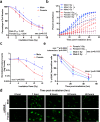
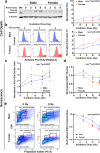
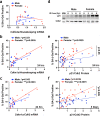

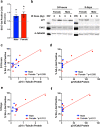
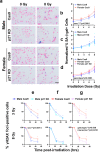
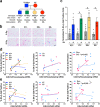
Similar articles
-
Cooperative p16 and p21 action protects female astrocytes from transformation.Acta Neuropathol Commun. 2018 Feb 20;6(1):12. doi: 10.1186/s40478-018-0513-5. Acta Neuropathol Commun. 2018. PMID: 29458417 Free PMC article.
-
p21-Dependent Senescence Induction by BMP4 Renders Glioblastoma Cells Vulnerable to Senolytics.Int J Mol Sci. 2025 Apr 23;26(9):3974. doi: 10.3390/ijms26093974. Int J Mol Sci. 2025. PMID: 40362216 Free PMC article.
-
Temozolomide Induces Senescence and Repression of DNA Repair Pathways in Glioblastoma Cells via Activation of ATR-CHK1, p21, and NF-κB.Cancer Res. 2019 Jan 1;79(1):99-113. doi: 10.1158/0008-5472.CAN-18-1733. Epub 2018 Oct 25. Cancer Res. 2019. PMID: 30361254
-
Elimination of Radiation-Induced Senescence in the Brain Tumor Microenvironment Attenuates Glioblastoma Recurrence.Cancer Res. 2021 Dec 1;81(23):5935-5947. doi: 10.1158/0008-5472.CAN-21-0752. Epub 2021 Sep 27. Cancer Res. 2021. PMID: 34580063 Free PMC article.
-
Copper induces cellular senescence in human glioblastoma multiforme cells through downregulation of Bmi-1.Oncol Rep. 2013 May;29(5):1805-10. doi: 10.3892/or.2013.2333. Epub 2013 Mar 6. Oncol Rep. 2013. PMID: 23468063
Cited by
-
Crosstalk between the DNA damage response and cellular senescence drives aging and age-related diseases.Semin Immunopathol. 2024 Aug 2;46(3-4):10. doi: 10.1007/s00281-024-01016-7. Semin Immunopathol. 2024. PMID: 39095660 Review.
-
Epigenetic developmental mechanisms underlying sex differences in cancer.J Clin Invest. 2024 Jul 1;134(13):e180071. doi: 10.1172/JCI180071. J Clin Invest. 2024. PMID: 38949020 Free PMC article. Review.
-
Gender and sex interactions are intrinsic components of cancer phenotypes.Nat Rev Cancer. 2025 Aug;25(8):634-648. doi: 10.1038/s41568-025-00829-4. Epub 2025 May 19. Nat Rev Cancer. 2025. PMID: 40389544 Review.
-
Beyond Prostate Cancer: An Androgen Receptor Splice Variant Expression in Multiple Malignancies, Non-Cancer Pathologies, and Development.Biomedicines. 2023 Aug 7;11(8):2215. doi: 10.3390/biomedicines11082215. Biomedicines. 2023. PMID: 37626712 Free PMC article. Review.
-
Sexual Differentiation Specifies Cellular Responses to DNA Damage.Endocrinology. 2021 Nov 1;162(11):bqab192. doi: 10.1210/endocr/bqab192. Endocrinology. 2021. PMID: 34478502 Free PMC article. Review.
References
Publication types
MeSH terms
Substances
Grants and funding
LinkOut - more resources
Full Text Sources
Molecular Biology Databases

